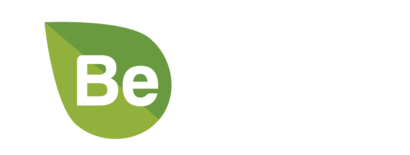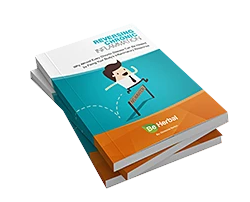Have you headed out to the gym, only to end up too sore to work out? Or maybe you're nursing an injury? The good news is, you don't have to just deal with pain. There are ways to relieve pain naturally – using just your diet and lifestyle choices. We'll share what to use, and how to use them, to soothe the soreness away.
Food As Medicine
It's no secret that here at BeHerbal, we love using food and natural supplements to boost well-being and heal the body. After all, it's how the body was designed to work. So if you're feeling sore, have a look to these foods and nutrients to give you natural relief.
Turmeric
We really cannot emphasize the power of turmeric enough! This anti-inflammatory superstar is a key food for pain relief in any circumstance.
In fact, turmeric has been found to be as effective as some anti-inflammatory medications when it comes to pain relief. This is thanks to its many anti-inflammatory and antioxidant compounds that protect the body from damage.
Turmeric can be added daily to relieve pain. If you're dealing with severe or chronic pain, a supplement might be a good addition to your daily routine.
Tart cherry
When it comes to delayed onset muscle soreness (DOMS), tart cherry is champion. DOMS is commonly known as post-workout pain, occurring 1-2 days after intense exercise. But tart cherry can both relieve and even prevent this problem.
Research shows that consuming tart cherry juice or supplements can reduce pain caused by exercise, and aid in a quick recovery. It also helps to deepen sleep, which can further speed recovery time. Tart cherry may also help with other forms of pain for the same reason.
Try consuming a small glass of tart cherry juice after your workout. You can also take it before bed, particularly if you have trouble sleeping.
Glucosamine
Maybe you're at that point where you feel pain a little less in the muscles, and a little more in the joints. That's where glucosamine truly shines, offering pain relief in the joints.
Glucosamine has anti-inflammatory properties when used in conditions such as osteoarthritis. But it is also an essential building block for joints. So when you're getting glucosamine in, you can help to rebuild the injured joint naturally.
Glucosamine is best paired with chondroitin, another anti-inflammatory compound. Research suggests that 1500mg of glucosamine daily is most effective for pain relief. Looking for dietary glucosamine? Your best bet is slow-cooked bone broths.
Ginger
Looking to lose the aches and pains? Ginger is actually thought to be a great option for natural pain relief, no matter what the injury.
Ginger contains compounds and antioxidants that can relieve inflammation and protect tissues from further damage. It also boosts circulation, so more healing nutrients can reach the painful area and repair quickly.
Ginger is great teamed up with turmeric, or by itself. Whether you add it to juices and smoothies, stir-fries or even desserts, it can be enjoyed daily.
Lifestyle Tips And Tricks
Food and lifestyle go hand in hand when it comes to pain relief. Taking care of your body physically is key to reducing inflammation and feeling better quickly. These are our favorite lifestyle hacks for relieving pain.
Meditation
One of the most effective techniques for relieving pain involves not moving the body at all! Meditation is incredibly effective for pain, and for good reason.
Firstly, meditation encourages physical rest of the body. Almost every type of meditation involves stillness, whether you're seated or lying down. So it gives your muscles a break.
But meditation also works on the nervous system. By switching us from 'fight or flight' to 'rest and digest', it can down-regulate the mechanisms that can cause pain. By calming the nerves, you can calm the body's response to injury and inflammation.
So if you're aching, try a quick 10 minute meditation, focusing on deep breaths. You should feel some relief within a few minutes.
Stretching
Have you ever skipped your post-workout stretch because you're running late? You might be setting yourself up for future aches. Stretching and practices like yoga can help to relieve pain, and may even prevent it.
Stretching can release knots in the muscles that cause tension and pain. It can also help the body to supply muscles with repairing nutrients. But stretching is also soothing for the nervous system, making it twice as good for pain.
Try warming down with some yoga stretches after a tough workout. If you're injured, ask your health professional for some supportive stretches to practice.
Warm packs
When you first injure yourself, ice might be more soothing. But if you're dealing with aching muscles for days after a workout, using warm packs might be more useful for relieving pain.
Like ice, warm packs can relieve the sensation of pain. But unlike ice, they actually support the natural process of acute inflammation. Warmth encourages blood flow to the area, which will bring all of the healing nutrients and blood cells in with it.
Try using a warm pack for any injury that is at least 24 hours old, or on post-gym aches. You can also alternate between ice and warm packs if you prefer.
Rest
It might seem obvious. But many of us don't rest enough when dealing with pain and injury, no matter what the cause. We push through, and that means pain lingers.
Pain is actually a huge strain on the body's energy stores. When we're in any kind of pain, the nervous system is on high alert constantly. This is why you feel so fatigued when you're hurting.
So if you're sore, try to really rest. Aim for at least 8 hours sleep each night – in fact, go for even more if your body wants it! Take a day off from the gym or the track, and let your muscles relax. It takes time to recover, so try not to fight the process.
Whether your pain is acute or chronic, give these ideas a try today. After all, all you have to lose is your aches and pains!
What's your favorite tip for getting through soreness? Share with us below.
References
https://jissn.biomedcentral.com/articles/10.1186/1550-2783-7-17
http://onlinelibrary.wiley.com/doi/10.1002/art.22180/full
http://www.sciencedirect.com/science/article/pii/S1063458407000556
http://www.sciencedirect.com/science/article/pii/S1526590011007929
http://www.sciencedirect.com/science/article/pii/S0304394012004806
https://www.ncbi.nlm.nih.gov/pubmed/16858479
Image: Source


